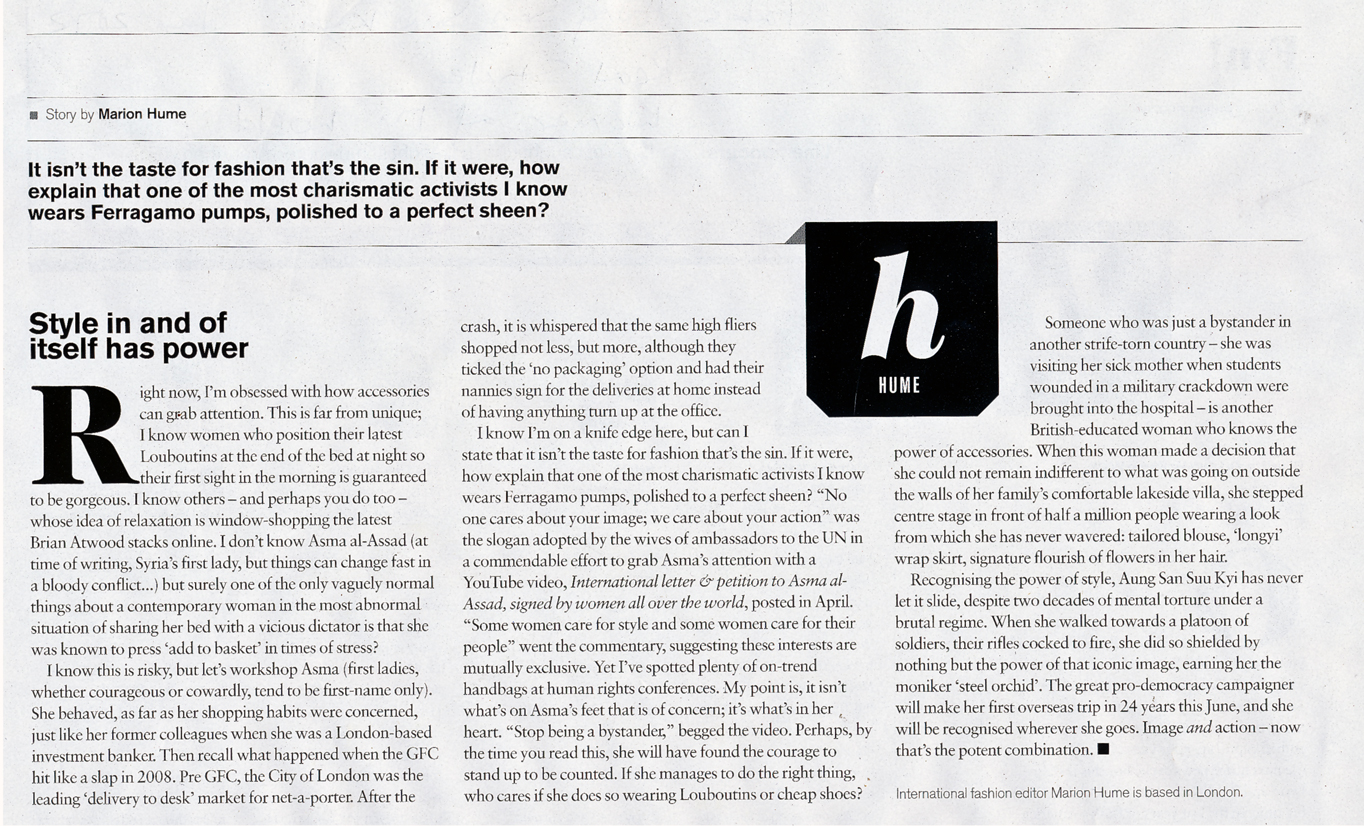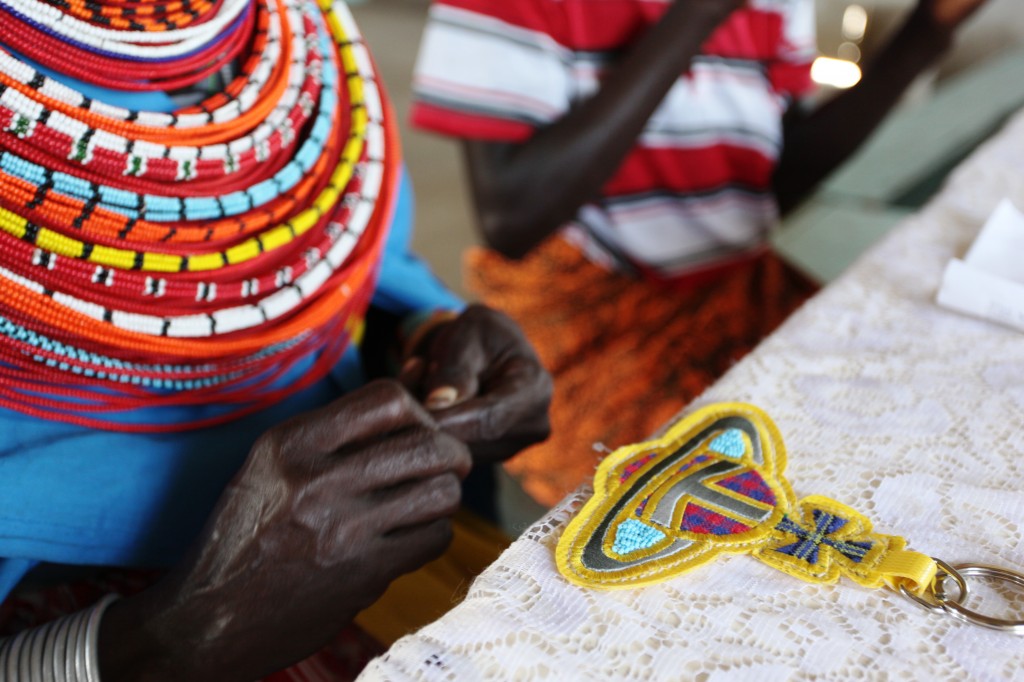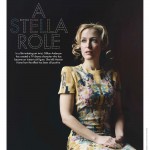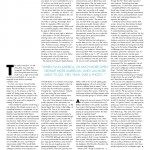All posts by admin
Sacré Bleu – Australian Financial review
by Marion Hume
Hush hush, but have you heard the latest about cocagne? The source is limited but whispers are spreading through the French fashion crowd. Really, if you are planning to holiday in the snazziest summer enclaves in Europe next summer, (Cap d’Antibes, Ile de Re, St Paul de Vence….) you don’t want to miss out.
We are talking about something difficult to obtain but entirely legal of course. While you pronounce “cocagne” almost exactly like the marching powder which, some years ago, a supermodel allegedly put close to her nose, this column reaches you not from seedy late night London but from sun-drenched South West France, with its Medieval cities which grew rich thanks to the cocgane trade reaching every corner of the world.
What is cocagne? It’s about the size of a tennis ball and originally came with a distinct whiff of urine. In 15th century Toulouse, dealers built Medieval McMansions complete with blingy turrets and spiral staircases and probably tried to out-do each other with pimped-up ox carts too. The hit they sold was blue.
A cocagne is the solid, transportable form of a plant extract that releases blue dye. While abundant in nature, for centuries, blue was the trickiest hue to fix onto fabric. Your 12th century Game of Thrones warlord wasn’t wearing ecru because of a pre-Armani taste for beige but because no one had yet been able to take the taste for woad face paint and make it work for fashion. The breakthrough came when someone took the ordinary-looking plant called pastel, from which woad derives, pulped the leaves, dried them, fermented them in human urine, rolled them into balls then, about a year later, crushed these and hurled the powder into a vat of boiling water. When the offcuts from the loom were dipped into this brine, the cloth emerged a celestial blue.
So successful was the taste for pastel blue that by 1570, the pope decreed priests shouldn’t be seen in it as it was far too common. But the good times would end. Indigo – faster, cheaper – arrived from India. The French government tried to ban its import but by the mid 18th century, it was all over for the lords of cocagne. In turn, the 19th century saw indigo ousted in favour of synthetic dye, the 20th saw the pollution of rivers near European fashion factories. And so it came to pass that, by the 21st century, the poor of China started dying because dyeing had turned their water sources toxic. Those with a conscience are looking back to the environmentally-pure pastel of France.
A combination of university boffins plus eager artisans have been trying to bring pastel up to date for over a decade, the challenges, including finding an eco trigger for fermentation that does not whiff of the pissoir and making a labour-intensive process economically viable have taken time. First successes including (pee free) body products – soaps, lotions and the like – trumpeting the pastel plant’s antiseptic properties and labelled “Comptoir de Pastel” are now de rigeur in the chicest French holiday houses.
Now, at last, linen and cotton scarves dip-dyed a glorious Gallic blue are available via a completely sustainable reintroduction of a traditional artisanal trade and for around the 40 euro mark, making them viable additions to a holiday wardrobe. Gorgeous Gauls, who would never be seen dead out of darks while in Paris, are accessorizing their summer looks (white jeans, striped T-shirts – that chic cliche that keeps on looking good) with a swath of pastel blue scarf, worn either soft knotted at the neck, wafting in the evening breeze or even tied over an Eres swimsuit.
As far as I know, Pastel de Lectoure is the only producer to have launched an online source of pastel scarves with an English translation. Let the international trafficking of cocagne begin.
Fashion Hearts Kenya? – The Business of Fashion
How has the recent terror attack on Westgate Mall in Nairobi changed things for designers with manufacturing connections in Kenya? Marion Hume reports.
Business of Fashion | October 2013
NAIROBI, Kenya — Bex Manners, aka Bex Rox — which is the name of her costume jewellery line — figured it would be sensible to sit down for a proper brunch. A long working day lay ahead, then the midnight flight back to London. But time was pressed. So instead she grabbed take-out from ArtCaffe and went on her way. Less than 15 minutes later, terrorists stormed the Westgate Mall. The four-day siege in Nairobi left at least 67 dead, 39 still missing, a nation reeling.
You might be surprised who in the fashion world has ties to Kenya. Bex Rox is known for rock and roll, party-all-night-in-Ibiza edginess, not “ethical” or “Africa.” A connection to the continent happened by chance. She was in London’s Portobello Road, bumped into Cristina Cisilino (of the high-end jewellery producer, Crea Africa, based in Nairobi) “and the next thing I knew, I had a 40-piece collection being prototyped and I flew out to [Kenya] to see samples through the final stages.”
A Paris fashion week party to show off “Afrika” — including bold bracelets in gold-plated brass and knuckleduster rings in sock-it-to-you brights — went ahead as planned. Yet as guests sipped cocktails and took in the view of the Eiffel Tower from the private residence, on loan for the night, talk turned to near-misses. “The first thought was, ‘Are our friends safe?’” said Erin Beatty, design director of Suno and veteran of the New York-to-Nairobi commute. “Common sense told all of us not to go to Westgate,” said a subdued Max Osterweis, founder of Suno, the label named after his mother, who has had a home on the Kenyan island of Lamu since his childhood. “But when you need something for your laptop, it’s where the Apple store is. It’s where the book store is; the ATM.”So what now?
Does fashion “heart” Kenya?
Does fashion care?
“I can say our customers have been buying a lot,” says a still-shaken Manners. “Is that because of what just happened? Honestly, no. It’s because it’s handmade, lovely and I can cater exclusively for small quantities; I can offer an amazing colour palate with the Maasai beading.”
Osterweis is of the opinion that caring can never come first in fashion, this despite founding Suno because he cared so much. The son of a wealthy family, he launched Suno instead of writing a bit fat charity cheque after Kenya’s post-election violence, in 2008, claimed over a thousand lives and left 350,000 people displaced. As he told me when we met in Nairobi for a Time magazine story (April 2009), “I wanted to set an example to show that investment in Africa need not be about building more safari lodges.” An entirely “made in Africa” label was never the ambition however. “I’d seen brands being unrealistic, so we’ve invested in people’s strengths, produced what we knew could be done well in Kenya, while also producing elsewhere,” he told me then, revealing his aim to dress cool girls for hot, New York-summer nights, while, at the same time, providing work to skilled Kenyan artisans (as well as those in Italy and the United States).
Today, fans of Suno include the actress Elle Fanning, the artist Cindy Sherman and American First Lady, Michelle Obama. And as the label has soared, so too have the number of units made in Osterweis’ second home nation, bolstered by an additional online offering of sneakers, pyjamas and totes made exclusively in Kenya. “No one has said ‘I’ll order more,’” he says now. “People buy what they like.” As for his commute, “Nothing changes, except we won’t be eating pizza at Artcaffe. What happened is not a Kenyan problem, it’s a global problem. It’s not life as usual. It’s dealing with life as it is.”
Because it was founded by Bono and his wife Ali Hewson, Edun attracted first ludicrous expectations then harsh criticism, especially after pragmatic, LVMH-appointed CEO Janice Sullivan insisted on scaling African production back to ensure a viable economic foundation for the brand. (“Out of Africa, Into Asia” was how The Wall Street Journal reported the decision, back in 2010). Sullivan’s tactic to pull back, shore up, then reintroduce the African production that was Edun’s central “raison d’etre” seems to be working at last. Over 80 percent of the line is now made on the African continent, although the percentage in Kenya, where it all began, remains quite small.
“No one has brought up Kenya once,” says Sullivan at Edun’s Paris showroom, this while fingering a goat horn and silver collar, made in collaboration with Nairobi-based jeweller, Penny Winter. Instead, she says, the chatter is about the brand’s new designer, Daniela Sherman (formerly of Alexander Wang and The Row). So will Edun stick with Kenya, especially given growing production in Madagascar means the brand could easily pull out of a trouble spot and still hit its “made in Africa” targets? Ali Hewson, who has joined us, looks incredulous at the suggestion. “We were in Kenya for the riots of 2008. We were in Uganda for the attack at the World Cup. We were in Mali two weeks before the coup. We’re Irish!” by which she means proximity to risk won’t change a thing.
Ilari Venturini Fendi admits to being nervous in Nairobi, “constantly aware of the possibility that something so bad might happen. It’s always been quite complicated to work in Kenya.” Whether she returns soon or not, there’s no question that her socially conscious, made in Africa accessories brand, Carmina Campus, will continue to operate in the country, where the facility to achieve the label’s ethical goals at the high quality expected by a Fendi is already established. Each season, artisans in Italy connect with those living in the slums of Korogocho and Kibera via video which, Venturini insists, is not about “us” teaching “them,” but instead an exchange of ideas and know-how.
Chan Luu’s seed bead wrap bracelets in raw-cut leather are hot sellers. Do global stores care that the Los Angeles-based celebrity jeweller produces in Kenya (where she may be the largest single contractor of Maasai beaders, all paid a fair wage)? “What matters is everyone buys!” she shouts across the melee of those placing wholesale orders at a showroom in Paris. In a quieter moment, she adds, “I believe poverty can create violence. My customers want to do good for the world, so they support these ethical fashion projects.”
Both Luu and Venturini Fendi were introduced to Kenya via The United Nations’ ITC Ethical Fashion Initiative, (full disclosure: it was on assignment in Kenya for Time that I met the head of the initiative, Simone Cipriani, and, as a result, began working with them). “The terrorist attack has produced a double effect,” Cipriani says. “Yes, short-term travel plans of colleagues in the fashion industry have been disrupted. First of all, we work to keep collaborations with us stable, supplying African artisans with ongoing work in a meaningful way. Another important reaction is from fashion brands wanting to bring work to Kenya (several more brands have reached out since the Westgate siege). Terrorism is a global threat. A way to fight is by giving work and dignity to every human being. And if we do it, by creating beautiful, unique and gorgeous products, so much the better for everybody.”
Surely eternal activist and ethical pioneer, Vivienne Westwood would agree? Did she include so many Kenyan bags in her Paris show this season out of solidarity with artisans she met when she visited Nairobi in 2011? “They’re my favourite bags, that’s why I show them,” says ever-honest Dame Viv backstage. “I show them because they’re lovely.”
Stella Role – Sunday Life
Stella Role
In a life-imitating-art twist, Gillian Anderson has created a TV drama character who has become an instant cult figure. She tells Marion Hume how the effect has been all positive.
Sunday Life | October 2013
This really is bad form. I’m still sitting here, hours later than I expected, and Gillian Anderson, she of that gimlet stare and surly mouth, has no right to have made me feel so uncomfortable in my own skin – especially as she looks so supremely confident in hers.
It is 5am. I’m alone. I’ve just finished watching the complete series of the crime drama The Fall and there’s no way I can sleep now. So I’m sitting up, as the final credits roll, feeling jumpy and angry – the latter with myself, because I perched on this sofa hours ago, just for 10 minutes, to get a sense of the series and be prepped for meeting its lead.
I never intended to watch the whole thing in one sitting, but The Fall gets a grip on you. It’s compelling because it’s unexpected. It’s not “Scandi crime”, especially as Anderson’s character, Detective Superintendent Stella Gibson, wouldn’t be seen dead in a big ugly jumper. Instead, she is the centre of a universe into which men are invited, often for sex, then dismissed afterwards, followed by an expensive glass of pinot.
It is a mistake, of course, to confuse character with actor, yet Gillian Anderson so utterly inhabits her blisteringly intelligent and fiercely sexy detective that when the series ran on the BBC last June, it provoked an internet meme called “What would Stella do?” What Stella Gibson does when a male colleague comments on her seduction of a policeman is to fire back, “Woman subject, man object, it’s not so comfortable for you, is it?” and you can almost hear the sound of women around the world applauding. But what Stella says to an intrusive reporter is this: “No one knows better than me how important the media is … but really, you should f… off now.”
So it is with some trepidation that I set off to meet Gillian Anderson. She turns out to look rather unlike Stella, as she walks in wearing a floor-length, floral flutter of a sleeveless chiffon maxi dress accessorised by wedge sandals. Stella would be in something slippery, mean stilettos and the peek of a black lace bra.
Fashion, often not quite right on television, is pitch perfect in The Fall, where power dressing means satin in blush pink and a key scene hangs on a wardrobe malfunction at a police press conference. “It’s not fashion, it’s style,” Anderson corrects, relating how she and the costume team booked a VIP suite at a department store, then narrowed down Stella’s look from hundreds of separates hanging on the racks – no pant suits. When the series aired in the UK there was a marked spike in the sale of silk blouses.
We meet at London’s Young Vic theatre. Anderson has the looks of a beautiful woman whom the world thinks is gorgeous (“haughty lips”, “aquiline features”, “pellucid eyes” are among the more cerebral descriptions, while “sexiest woman alive” remains the favoured lads’ mag tag).
From what I have gleaned, Anderson has a reputation as a prickly interviewee – not surprising given she became famous as FBI Special Agent Dana Scully in The X-Files at the age of 24. Thus, at 45, she has spent more than two decades contractually obliged to promote her performances by chatting to the press. Having waded through clippings fatter than a police file, I find myself in sympathy – any sane human would be scratchy when asked, again and again, to reveal the truth about aliens, even though it is more than 10 years since Anderson left Scully behind and changed her hair from red to blonde.
After walking two steps behind David Duchovny’s Fox Mulder from 1993-2002 (although when she found out he was paid double she demanded, and got, wage parity) Anderson surely showed how sane she was by getting away from paranormal sightings in Vancouver and moving to Britain, where she spent the next decade garnering plaudits in television costume dramas such as Bleak House and Great Expectations. She also made movies (The Mighty Celt, Shadow Dancer) and turned down Lady Cora in Downton Abbey.
Today, she’s not prickly at all, instead passionate about The Fall and the relief that the role of DSI Gibson is making her known for being a grown woman – “although I’m not Stella by any stretch”. She senses, she says, her fame level rising again, as people snap pictures on public transport without asking (she takes the train and the London buses). Thankfully, this is nowhere close to what she had to deal with in her 20s, when the paparazzi rammed her car in order that, when she got out to get insurance details, they could grab their shots.
“I feel that Stella has had nothing but a positive effect on how I am in my life. Not to say there weren’t elements before, but I think she’s sharpened my sense of self and femininity,” says Anderson.
What of those feminist ripostes? “Well, I’ve always been the person most likely to say ‘f… off’,” she admits in her crystalline British accent (having spent part of her childhood in the UK, part in the US, she can switch seamlessly). “But the fact Stella is able to say ‘f… off’ with such poise brings her a different level of respect.” As for “What would Stella do?” becoming an online mantra to inspire other women, Anderson has had bumper stickers and fridge magnets made, with the proceeds going to a women’s shelter.
Adding to the mercurial unease of The Fall is its location in the still-scarred city of Belfast. DSI Gibson is the outsider, seconded from London’s Met because the Police Service of Northern Ireland has failed to catch a killer preying on young businesswomen. She does nothing to ingratiate herself.
The writing is whip-smart and female-friendly (although penned by a man, Allan Cubitt). “I think people expect me to be a lot more intelligent than I actually am, because I played Scully and now Gibson. But that’s not a bad thing,” says Anderson. “The majority of the women I’ve been blessed to inhabit are women who I’m flattered to have been able to spend time with, and for people to think I’m even remotely like them is great. Although there have been a few thrown in there that are less appealing,” she deadpans, perhaps referring to the intractable Lady Dedlock and the flinty Miss Havisham.
What’s novel – though it shouldn’t be – is the capacity for female friendship that ripples through The Fall. “That’s really important,” says Anderson, fire-flashing those pale sapphire eyes, “to show adult, mature women – completely different in the experiences they’d been through and the choices that they’d made – bonding through womanhood. Too often, what is portrayed between women is either ‘girly’ and going shopping, or the opposite, the negativity.”
In the show, a female detective and forensic scientist discuss how they balance the dead bodies at work with live ones at home, talking of “doubling”, “compartmentalising”. “I compartmentalise everything,” says Anderson. “It’s useful in the work that I do, but it can be very separating in my personal life.”
That life cannot be entirely personal, given Anderson was thrust into the spotlight virtually straight out of drama school. Then she proved catnip to the tabloids by having her first child, Piper, as the first series of The X-Files reached a cliffhanger close. She married a Canadian, gave birth, returned to work 10 days later, got divorced, married again, divorced, had her sons, now aged seven and five, within a now-defunct long-term partnership – Anderson’s whole adult arc has been documented. Plus, she’s peppered it with all manner of juicy details (“‘I’ve experimented with women’ – X-Files star confesses to lesbian flings”, The Daily Mail) because she does interviews alone, including this one, with no publicist hovering to keep things on message. In high school she was voted “Most Bizarre” and “Most Likely to Be Arrested”.
She says her own judgment has matured, that she sees people beyond the pigeonholes she once put them in. “Human beings are so much more complicated than we often give them credit for. We see someone on the bus and we put them in a box. Then you discover that, actually, that person has been sexting with half of the world – all of that kind of stuff, it’s shocking!” she laughs. As for those buses, “If it gets too intense, I’m pretty good at putting up a wall of ‘Do not stare’. I actually find that, when I’m in America, I’m much more open. I behave more American, and I am more likely to go, ‘Hey, yeah, take a photo.’ I’m much more guarded here, but that’s because I think I’m much more British here.”
Maybe I’m being terribly British because I find I have no desire to ask Anderson if she’s dating or how her young-adult daughter is fairing or how she juggles work as a single mum with two little boys at home. But then I realise this isn’t about nationality, it’s about professional respect. As we talk about her ambitions, about Stella’s wider role as a representation of 21st-century middle-aged womanhood, we are businesslike. Because, after all, acting is Anderson’s business and her accomplishments are evident. And I have entirely forgiven her for my sleepless night.
The Fall starts on BBC UKTV on Foxtel on October 19.





